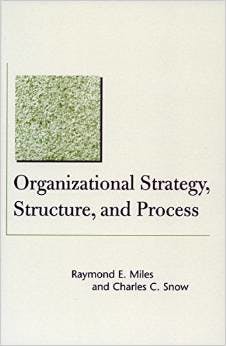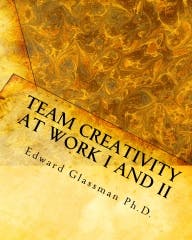We are in a fast-changing world where customers, particularly new customers, want quicker response, more customization, new products, new services and more flexibility. To compete in the new economy, American manufacturers need to become more creative, innovative, and flexible.
IBM Corp. (IW500/11) conducted a survey of 1,500 CEOs around the world and found that “more than rigor, management, discipline, integrity, or vision -– successfully navigating an increasingly complex world will require creativity.”
The survey also discovered that less then half of the CEOs believe their companies are prepared to handle a highly volatile, increasingly complex business environment, where customer preferences, government regulations, and global markets are all changing. However, the CEOs agree that these problems can be overcome “by instilling creativity throughout the organization.”
The Trouble with "Defender" Organizations
The organizational model that describes most manufacturing companies is the “Defender” or functional model. Defenders, according to Raymond E. Miles and Charles C. Snow in their classic book Organizational Strategy, Structure and Process have the following characteristics:
The Defender organization was designed to achieve high levels of efficiency. This type of organization worked for many years, but is generally too inflexible and slow to react, and has too much administration and bureaucracy to succeed in a fast-changing world. It will be difficult to instill creativity in a Defender organization.
The Defender Bible
The growth in management systems and controls of a Defender organization is often codified in the bible of rigid organizations — the employee handbook. Handbooks began as a tool that informed employees about vacations, holidays, and steel-toe shoes. However, the handbook morphed into a bureaucratic tool to control employee behavior, and govern personal standards of conduct, ethics, customer relations, personal responsibility, and a host of other issues.
The handbook is seen as the ultimate efficiency tool because it tries to codify all rules, policies, and employee behavior. But, in succeeding in efficiency it also reduces flexibility and freedom for the employees -- and it stifles innovation, creativity, and motivation. Once the organization attains a level of control over all levels, flexibility and innovation get crushed and the hiring favors safe employees who fit the conformer profile.
The Creativity Paradox -- Control vs. Creativity
This contradiction between control and creativity creates a dilemma for manufacturing corporations and big organizations in general. If it is true that creativity is the answer to helping corporations deal with all of the changes in the economy, then having a rigid organization based on controls is a contradiction. Manufacturing companies must find a balance between control and creativity
What is needed to be creative employee?
In a reportMost of these employee requests are just common sense, but they fly in the face of the rigid organization that emphasizes formalization and control. At a minimum, there must be a new balance between control and creativity, which may require the corporation to take a totally new approach to the organization and a complete change of culture.
I can’t imagine this happening in the Fortune 500 companies no matter how much they need creativity because they are, by design, focused on the short term, with profit, efficiency, and control as the primary drivers.
Why do small start-up companies often have more than their fair share of creative people compared to a large manufacturer? Their start-up cultures are loose, flexible, and informal. However, as the company grows and adds employees, the organization adds more rules, controls, and management tools to manage more people. As control is enlarged, flexibility and creativity tend to diminish.
I believe that most people ... can become more creative in an organization that supports creativity and training. So you may not have to hire creative people ...
There is also the problem of personality. Many creative right-brained people are not conformers but are performers. Many don’t fit the human resource profiles of good loyal workers: They have strong opinions and can cause conflicts. They are often not “yes men,” and it takes a strong confident leader (with empathy) to understand them well enough to get all that they are willing to give. On the other hand, they are creative, intense, self directed, and good to have during a crisis.
Instead of trying to hire creative people, why not consider fostering creativity in the people who are already employees? There are some people who are very good right-brain thinkers who were born with a pre-disposition to creativity. But I believe that most people use both right and left sides of their brain and can become more creative in an organization that supports creativity and training. So you may not have to hire creative people because you may already have them.
A New Type of Organization
What is needed is a new type of organization that is flat (instead of a pyramid), has less administration and pushes authority down to the workers who are closest to the customer. The best organization to promote a culture of innovation and creativity is a flat and de-centralized organization where authority is continually pushed down to the people who are doing the work.
... creativity can’t happen without changing from a rigid organization that depends on control, rules, and a formal structure, to a flexible and less formalized organization where employees are encouraged to take risks, experiment, and question the status quo without reprisal.
I call this a “Prospector” organization, and I find it to be a type of manufacturing organization that works well in a changing environment where the company must quickly respond to customer demands, find new opportunities, and foster creativity. A prospector’s prime capability is in finding and exploiting new product and market opportunities in a changing marketplace. It is an organization that motivates people, values creativity, and pursues effectiveness rather then efficiency.
I think that increasing creativity in a manufacturing organization is less about hiring the lone genius and more about getting creativity out of existing employees. I believe that creativity can’t happen without changing from a rigid organization that depends on control, rules, and a formal structure, to a flexible and less formalized organization where employees are encouraged to take risks, experiment, and question the status quo without reprisal.
To develop a creative and innovative culture, some companies have developed teams of creative people, formed separate organizations to develop new ideas, or purchased a start-up company. Every manufacturing company (large and small) is facing the control vs. creativity paradox because they all know that we must be innovative to survive.
Mike Collins is the author of Saving American Manufacturing. You can find him on the web at www.mpcmgt.com.





